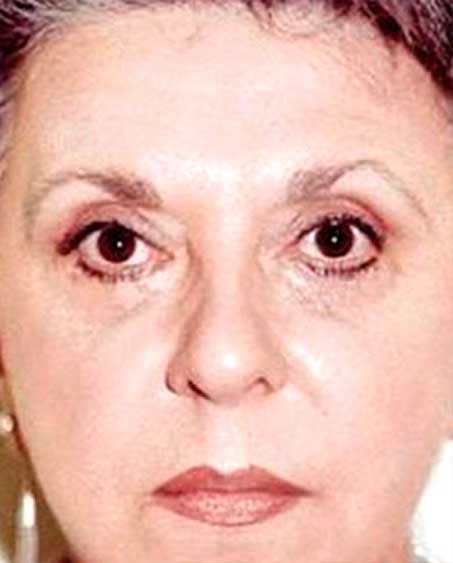Upper Eyelid Surgery
If you suffer from sagging upper eyelids or eyelid related blurry vision, this is a relatively simple solution with great aesthetic results. Dr. Milgrim will make a tiny incision in the upper eyelid and remove any excess skin while tightening the surrounding muscles. Any additional fatty tissue around the nose will be removed and smoothed out. He will design hidden stitches in the eyebrow to minimize visible scarring.
Lower Eyelid Surgery
This procedure addresses puffy bags under the eyes. Dr. Milgrim employs several techniques, the most common of them is creating a hidden incision in the lower eyelid conjunctiva (tissue on the inside surface of the eyelid). The bulging fat can easily be identified and removed without disturbing the outside skin. Enjoy a fresh look without the risk of an outside scar.
Asian Eyelid Surgery
It is estimated that half of the Asian population lacks a crease in the upper eyelid. Dr. Milgrim is often asked to create that fold, which is prevalent in Caucasian patients.
Recovery After Eyelid Surgery
Dr. Milgrim will provide you with detailed recommendations to prepare for surgery and aftercare best practices to achieve better surgical results. In general, Dr. Milgrim recommends you allow yourself about a week’s recovery time. Pamper yourself; apply ice packets or cucumber slices to your eyes to reduce swelling. For patients that wear contacts, we suggest switching over to glasses to prevent eye strain. Polarized sunglasses are recommended while outdoors.
Schedule a Consultation Today
Dr. Milgrim, who was voted by his peers for more than 10 years as one of NJ’s Top Doctors, as well as his caring staff, will be delighted to meet you, examine your skin and facial muscles, suggest a surgical plan to match your goals and answer any question you may have. Please contact us today for a consultation. We often see NJ patients who come to our Closter office from Englewood, Fort Lee, and Westwood.
Based in Bergen County, Dr. Milgrim frequently sees patients who come from surrounding communities, including Fort Lee, Westwood, Englewood, and Closter. In addition, patients often travel from further away to work with one of the leading eyelid surgeons in New Jersey.
Frequently Asked Questions
Am I a good candidate for eyelid surgery?
If you are a healthy individual with excess skin or fat around the eyes, you may be a good candidate for eyelid surgery. In many cases, droopy eyelids are associated with the natural aging process; however, weary-looking eyes is not necessarily age-related. Younger individuals can have weary-looking eyes due to a genetic predisposition–and can benefit from eyelid surgery. During a consultation, Dr. Milgrim will evaluate your eyes and determine if blepharoplasty is right for you.
Will I have scars after eyelid surgery?
Like any procedure that requires incisions, an eyelid surgery does carry some risk of scarring. To minimize the appearance of scarring, Dr. Milgrim makes the incisions as discreetly as possible, taking advantage of the natural crease and folds in the skin. This surgical technique As the skin heals, the scars fade, typically becoming unnoticeable.
Can eyelid surgery smooth out wrinkles around the eyes?
No. Eyelid surgery is designed to address droopy eyelids, puffiness, and excess fat. While the procedure can brighten the eye area, it will not address fine lines and wrinkles such as crow’s feet. However, there are other non-invasive procedures can be done to smooth out lines. Anti-wrinkle injections or dermal fillers are often used to complement a blepharoplasty procedure. Dr. Migrim can create a comprehensive surgical and skin rejuvenation plan to fit your specific needs.
Are there any serious risks associated with eyelid surgery?
A blepharoplasty is considered a safe and effective procedure. Patients can expect to experience some minor side effects after surgery, including swelling, tenderness, and some bruising. Some patients report temporary blurred vision or dry eyes. Like all surgery, an eyelid procedure carries some risks, such as complications with healing. However, serious or permanent problems are rare and most patients can look forward to a rewarding aesthetic enhancement.








